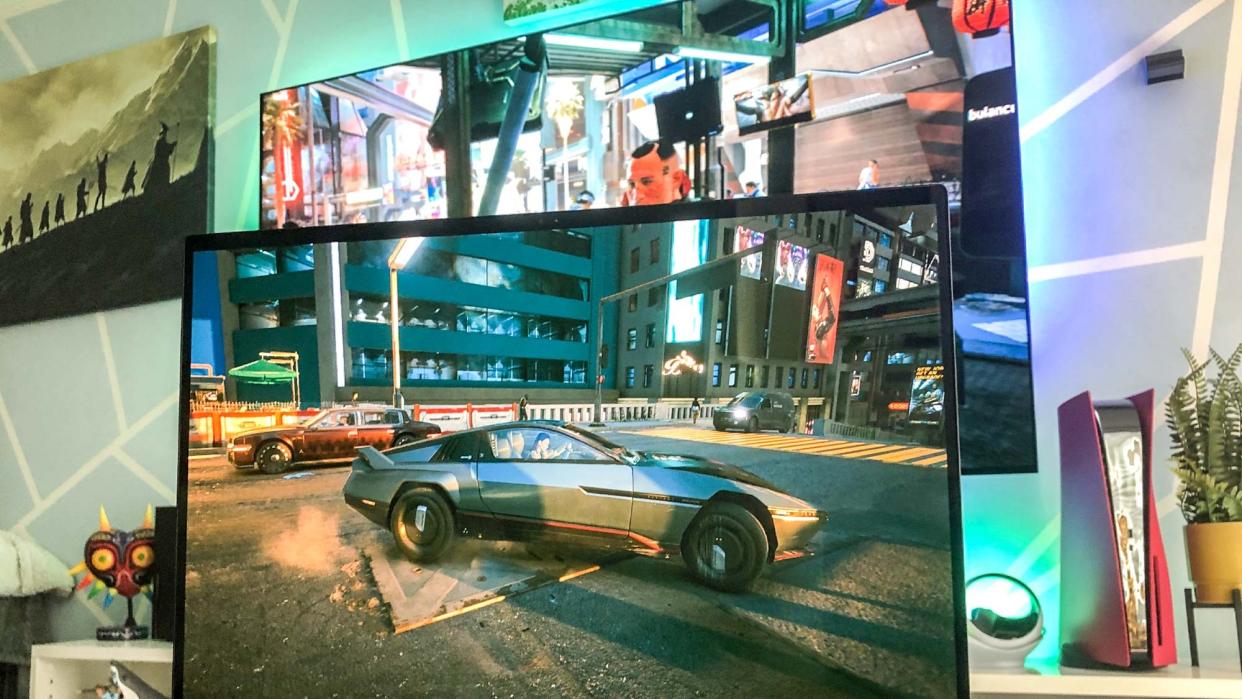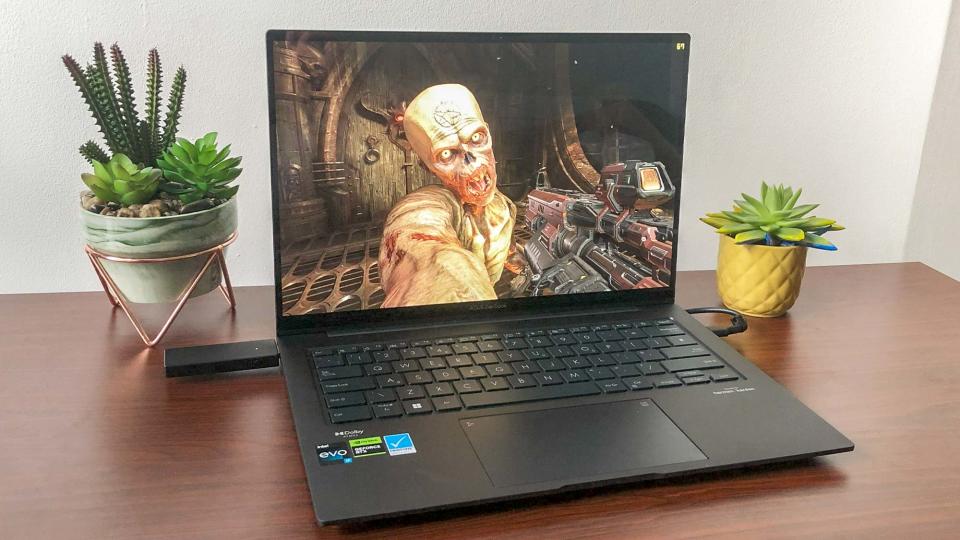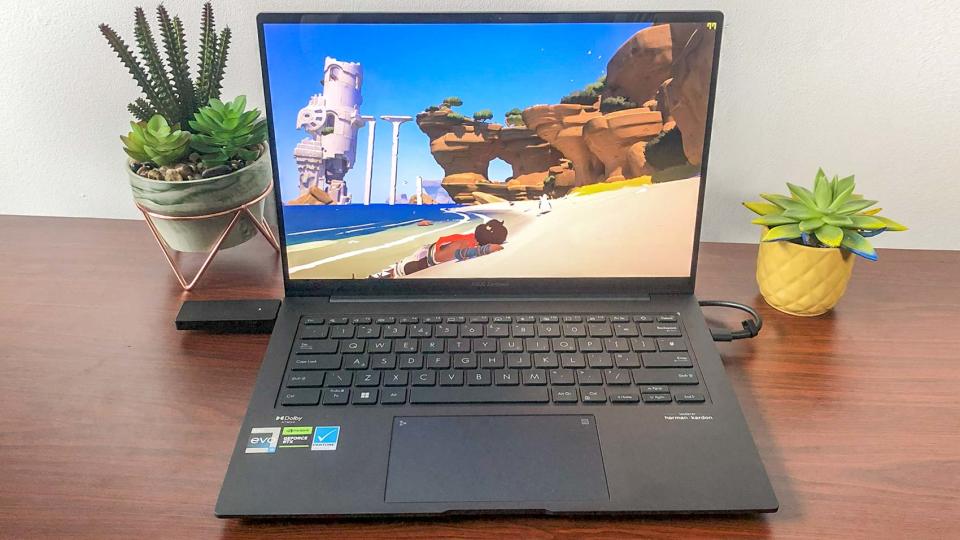This laptop’s screen is so good I've stopped using my 77-inch OLED TV

The LG C2 OLED is by far the best TV I’ve ever owned. I love this phenomenal 4K display so much, I own two of them — a 77-incher in my living room, and a slightly more restrained 48-inch model in my home office. And you know what? I’ve barely used that goliath in my front room for the past month.
Admittedly, part of the reason I’ve shunned my main LG C2 is because I was on holiday in Hawaii for three weeks. My barbecued Scottish skin says “aloha!”. Yet since I’ve come back, my colossal OLED has hardly been switched on.
You can blame the Asus Zenbook 14X OLED and its stunning screen for this.
I've been testing Asus’ lovely laptop — look out for our review soon — and I can honestly say it’s got the most impressive screen I’ve ever seen. It’s an absolute stunner. Though its resolution is only 2.8K (2880 x 1880), my eyes are besotted with how it handles color and contrast.
Right now, you’re probably wondering just how many sandwiches short of a picnic I really am. After all, why oh why would I shun one of the best OLED TVs around (and a gargantuan one at that) for a laptop with a screen that is only 14.5-inches?
Screen queen

Screen uniformity, that’s why. To be more specific, the Zenbook 14X OLED might just have the best gray uniformity I’ve seen on any display.
But what the hell is screen uniformity? In basic terms, it’s a way of determining how even the image a screen produces is. Even the best laptops, monitors and TVs can be plagued by bad screen uniformity if parts of their panels are brighter than others.
How does this manifest while web browsing, watching movies or playing games? Sections of the screen will show darker patches, often around the edges of the panel. In other instances, the center of the picture may look slightly darker than the rest of the action occuring on-screen.
Even the best laptops, monitors and TVs can be plagued by bad screen uniformity
A/V obsessives often refer to bad screen uniformity as ‘Dirty Screen Effect’. This panel flaw is most evident when watching content with a lot of fast panning movement — sports like ice hockey and soccer can show off DSE in ruthless fashion.
I’ve lost the run of myself obsessing over Dirty Screen Effect down the years. So much so, I must have sent back at least a dozen TVs during their return windows because my tormented eyeballs loathe a display defect the vast majority of people will never notice. And yes, I’ve almost certainly been blacklisted by every major UK retailer for my ludicrous returns history.
Picture perfect

Not that I have to worry about DSE with the Zenbook 14X OLED. From my extensive testing of this laptop, its screen is damn near perfectly uniform. This makes it an absolute dream to game on. Panning the camera across the pristine blue skies of Rime’s idyllic island can mercilessly root out bad screen uniformity on lesser displays, but on the 14X OLED’s panel, they’re utterly consistent.
I appreciate the 14X OLED’s perfectly balanced screen so much, I’ve found myself popping back for a second playthrough of Cyberpunk 2077 on Asus’ laptop rather than revisit CD Projekt Red’s underrated RPG on my Nvidia RTX 4090-powered desktop.
Sure, performance is nowhere near as good (even with Nvidia DLSS enabled), but I’m not complaining when the 14X’s screen produces such wonderfully punchy, vibrant and oh-so-uniform images.
The Zenbook 14X OLED's screen produces wonderfully punchy, vibrant and oh so uniform images.
I’m already dreading having to send the Zenbook back to Asus in the next few days, such is my head over heels love for its stunning OLED screen.
What will I do without it? I guess I’ll just have to… ahem, ‘settle’ for one of the best TVs ever made.
The LG C2 OLED may have the best screen uniformity I’ve seen in any TV, but even the best television I’ve ever owned can’t quite compete with the 14X’s perfectly pristine display.

